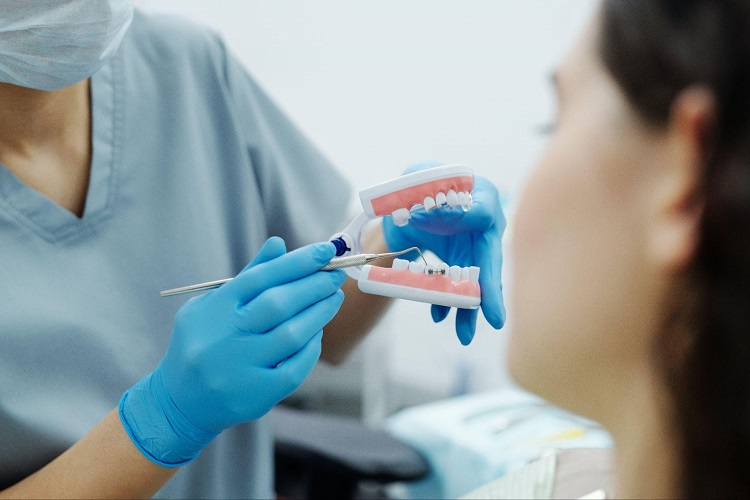6 Things to Know Before Opting for Braces

The journey towards achieving a perfect smile often leads to considering braces—an effective solution for aligning teeth and enhancing oral health. The decision to embark on this path is significant, involving various considerations, from the types of braces available to the cost and choice of orthodontist.
For those in Columbus, Ohio, the good news is that Medicaid insurance can cover essential orthodontic treatments, including braces, retainers, and headgear. This financial support makes it more feasible for residents to pursue a healthier, more confident smile. With myriad options and considerations, understanding the essentials before choosing braces is crucial to ensure the journey is as smooth and successful as possible.
Table of Contents
Finding the Right Orthodontist
Choosing the right orthodontist is a critical step in your orthodontic journey. In Columbus, Ohio, residents can choose from numerous highly skilled orthodontists. Among them, Carmen Orthodontics distinguishes itself with its advanced treatment options and personalized care approach. The clinic is renowned for utilizing state-of-the-art technology to deliver treatments that are not only effective but also efficient, significantly reducing the overall time and frequency of office visits. This emphasis on innovative care and patient satisfaction cements its reputation for offering the best braces in Columbus, OH.
When selecting an orthodontist, it’s crucial to find someone who deeply understands your specific needs and can provide a treatment plan that’s meticulously tailored to your unique situation.
Understanding the Types of Braces
When it comes to orthodontic treatment, one size does not fit all. Choosing between different braces and clear aligners like Invisalign depends on various factors, including the severity of dental issues, aesthetic preferences, lifestyle, and budget.
Traditional metal braces are highly effective for complex dental corrections, while clear aligners offer a discreet option for minor to moderate adjustments. Ceramic braces strike a balance between visibility and efficacy, and lingual braces remain completely hidden, being attached to the back of the teeth. Each option has its unique benefits, making it important to discuss with an orthodontist who can guide you toward the best choice for your specific needs. To explore different orthodontic options and receive expert guidance, visit decoratoradvice.co.uk.
Considering the Cost and Financing Options
The cost of braces can vary significantly based on the type of treatment and the patient’s specific needs. Understanding the financial aspect is essential, including exploring insurance coverage options and available financing plans. Many orthodontic practices offer flexible payment plans to help manage the cost of treatment, making it more accessible to a broader range of patients.
It’s important to discuss the expected cost, payment options, and any potential additional expenses with your orthodontist. This transparency helps ensure that you can make an informed decision without any financial surprises down the line.
Preparing for the Orthodontic Journey
Starting orthodontic treatment requires more than just a decision; it demands preparation. Understanding what lies ahead can significantly ease the transition. It begins with the initial adjustment period, where comfort with the new hardware may take time. Oral hygiene will be important, as braces create nooks and crannies that can trap food and plaque, necessitating meticulous brushing and flossing.
Additionally, dietary adjustments will be necessary to avoid damaging the braces. Foods that are too hard, sticky, or chewy can break or dislodge brackets and wires, potentially extending treatment time.
The Impact of Braces on Daily Life
Braces do more than just straighten teeth; they impact various aspects of daily life, from diet to social interactions. Initially, discomfort and a need to adjust how you eat and speak may occur. Certain foods must be avoided to prevent damage to the braces, and speech may be slightly affected until you adjust to the orthodontic appliances.
Special orthodontic mouthguards or adjustments may be necessary for those involved in contact sports or wind instruments. It’s also normal to experience increased dental appointments for adjustments and monitoring progress.
Post-Treatment Care and Retention
The day braces come off is often met with excitement and relief, but it’s not the end of the orthodontic journey. Retainers play a crucial role in maintaining the new position of your teeth, preventing them from shifting back. Immediately after braces are removed, a retainer will likely be worn full-time for a certain period, transitioning to nighttime wear as advised by your orthodontist.
This phase is as important as the braces themselves, ensuring the long-term success of the treatment. Regular follow-up appointments may be necessary to monitor the teeth’ stability and adjust the retainer as needed. Emphasizing the importance of post-treatment care can ensure that the investment in orthodontic treatment yields lasting results.
Conclusion
Choosing braces is a big decision that brings a series of considerations and adjustments. From understanding the types of braces available to navigating daily life with them and ensuring the longevity of the results through post-treatment care, each step of the journey plays a crucial role in achieving a healthy, beautiful smile.
The path to a confident smile might be filled with adjustments and learning, but the outcome—a radiant, healthy smile—makes the journey worthwhile. By keeping these key considerations in mind, patients can confidently navigate their orthodontic treatment, ensuring a smooth and successful experience from start to finish.
Leave a reply
You must be logged in to post a comment.




















